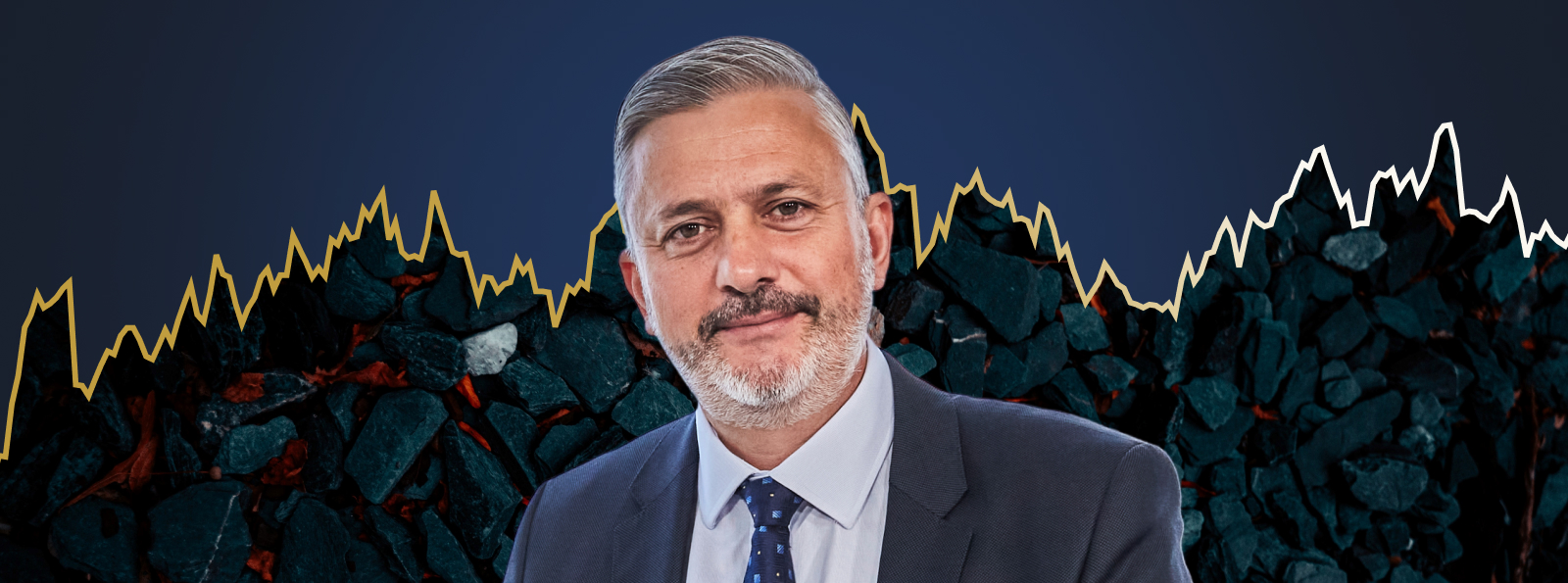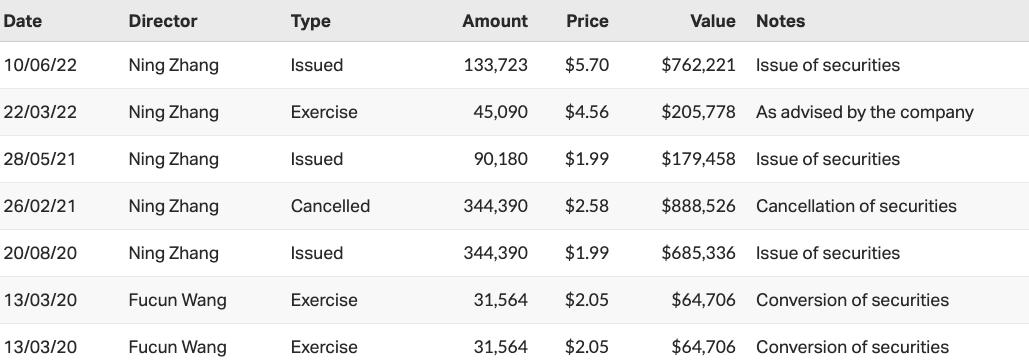Record revenue for this dual-listed coal digger but can the good times roll on?
An Australian-based coal producer, Yancoal (ASX: YAL) operates both open-cut and underground mines in New South Wales, Queensland and Western Australia.
With a market cap of $8.15 billion, it is one of the largest coal miners on the ASX. It’s also listed on the Hong Kong Securities Exchange, Chinese firm Yankuang Energy Group Company Limited a major shareholder with a 62.26% stake in Yancoal.
Yancoal’s record revenue for calendar 2022 was underpinned by the unprecedented coal prices the group received from customers. The average price for thermal coal during 2022 was $372 a tonne and $405 a tonne for metallurgical coal.
But this is where some uncertainty comes in, as Katana Asset Management's Romano Sala Tenna explains. Where will coal prices settle? And how will investors respond?
"We're already seeing that now, as coal prices rebase. We're seeing it in lithium too," says Sala Tenna.
"If prices start to pull under $120 a tonne, I think we'll start to see some of these companies retrace quite a bit more."
The strong prices were spurred by supply shortfalls due to a year of unusually wet weather across the major coal-producing regions – particularly Australia, Indonesia, South Africa and Russia. And of course, the outbreak of war in Ukraine last February pushed energy and coal prices to record levels.
In the following Q&A, Sala Tenna unpacks the result and provides his outlook for Yancoal, and mining companies more broadly, for the rest of 2023.

Yancoal key results for calendar 2022
- Net profit after tax of $3.58 billion
- Revenue of $10.55 billion, up from %.14 billion for calendar 2021
- $6.96 billion in operating EBITDA
- Run-of-mine coal production of 50.5 million tonnes
- Interim dividend of 70 cents a share, fully franked
Key company data for Yancoal

Note: This interview took place on Tuesday 28 February 2023.

What were the key takeaways from this result? What surprised you the most?
It was the huge amounts of cash flow reported. That was expected, but the company generated an extraordinary amount of cash flow in what was an extraordinary year. It went from an operating cash flow of $6.5 billion at the start of the year – that’s larger than the opening market cap of the company. So it paid off about $3.2 billion in debt and closed the year with $2 billion in net cash. The result was all about the cash flow.
What was the market’s reaction to this result? Was this an overreaction, underdone, or appropriate?
It was an overreaction initially, with the share price down over 6% at one stage but then recovering 3%. I think that’s because people were expecting a higher payout ratio. Management announced a 70-cent dividend, which brings the full-year yield up to 16%, with a payout ratio of 45% - which is low. The market was expecting more.
We’ve seen some higher payout ratios, such as Woodside’s 80%, but I view that as unsustainable.
In the case of Yancoal, they’re unlikely to do a buyback – management has made it clear they’re trying to increase liquidity. So, it’s going to be dividends, special dividends and growth, both inorganic and organic, that’s going to use their capital. That’s why I think they’ve surprised the market and we saw that overreaction.
Were there any surprises in the result that investors should be aware of?
One was the $1.5 billion tax bill, which will need to be paid in the middle of the year, that’s a negative.
On the positive side, there's the fact the company will be included in the Hang Seng Composite Index from the middle of March. So, any Hang Seng index fund will now need to own Yancoal or have a good reason why they don’t.
Would you buy, hold or sell Yancoal on the back of these results?
Rating: Hold
It’s a very strong hold, bordering on a buy. Obviously, there’s a 70-cent, fully franked dividend coming up – so you want to hold for that anyway. But the other thing that pushes it into a hold, rather than an outright buy, is the underlying thermal coal price. We’ve seen it retrace from ridiculous prices of more than US$400 a tonne, and the current spot price is about US$200 a tonne.
So, it’s ridiculously cheap and is going to generate super profits and super dividends for the next little while. But you always get an overreaction when a commodity price is rebasing, that’s what we’re seeing now. We’re seeing that in lithium now too.
There’s a bit of danger that, if thermal coal settles at between US$170 to US$180 a tonne, that’s still a very good price. But it’s just that sentiment as it re-bases, which is what we’re seeing now.
What’s your outlook on Yancoal and the ASX energy sector for FY23?
We’re in a moment where our team lacks clarity but there are two large drivers. In Europe, there are large stockpiles of coal and we’ve seen that switch from coal to gas, so for the time being, the European equation has been pulled out of the mix. That’s a negative for the coal price.
The positive is that there’s structural underinvestment in thermal coal, while demand is still grinding upwards. We’re trying to understand where this price sits. Anyone who says they know is either a lot smarter than I or they’re guessing.
Mr Market has to tell us where this price sits. If it’s between $150 to $200 a tonne, that’s a great price. But if it starts to pull under that, back to around $120 a tonne, I think we’ll start to see some of these companies retrace quite a bit more.
Are there any risks for Yancoal and its sector that investors should be aware of given the current market environment?
The coal price is the main risk. We’re seeing a transition away from thermal coal but we’re also seeing net demand increase. China’s reopening, Australian coal is again making its way to mainland China.
The one-off impact of the Ukraine war on replacing LNG through Europe has now run its course, I don’t think that’s going to play into the coal market again this year. That’s unless we see something extremely unusual like a once-in-a-generation northern hemisphere summer.
Regulatory risk is now in the top couple of risks for any company in the world, ti’s something you have to be across. But in the coal space, I think it’s run its course for the next couple of years.
A secondary risk for Yancoal is still a La Nina event. They’ve still got excess water on site, which is something they need to manage and I think that will improve in the coming years. Even their bottom end of guidance for production is a couple of million tonnes per annum above last year’s production, so management is confident it has a handle on that.
From 1-5, where 1 is cheap and 5 is expensive, how much value are you seeing in the market right now?
Rating: 4
A lot of stocks are fully valued but there are some pockets that are a 1, such as coal and lithium, but is it sustainable?
I’m cautious short term because I think we have to see some re-basing to declining consumer spending. Consumers are getting whacked four different ways, and yet consumer spending makes up 50% of GDP here and 68% in the US, so it must have an impact. But I’m excited about coming out the other side, with many companies we want to own, and we’ve got the cash we want to deploy. But we have to be disciplined to see if we get this next washout.
The longer it goes without that, the less likely it is we’ll get to the other side of the earnings valley. If it takes too long for investors to respond, we’ll already be looking forward to the earnings recovery and we might not see that dip.
Most recent director transactions

Catch all of our February 2023 Reporting Season coverage
The Livewire Team is working with our contributors to provide coverage of a selection of stocks this reporting season. You can access all of our reporting season content by clicking here.
2 topics
1 stock mentioned
1 contributor mentioned

